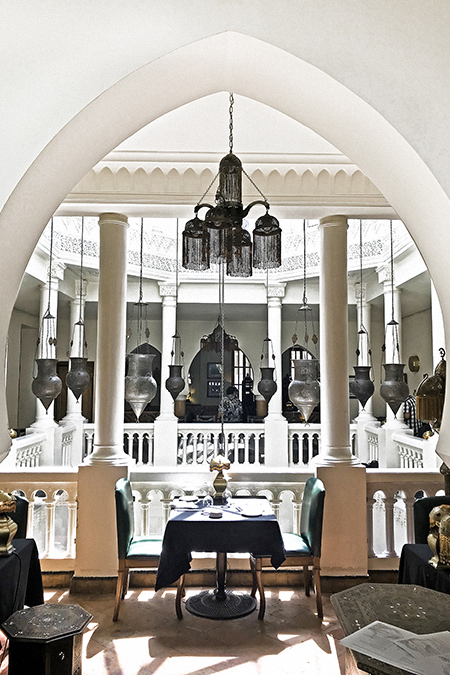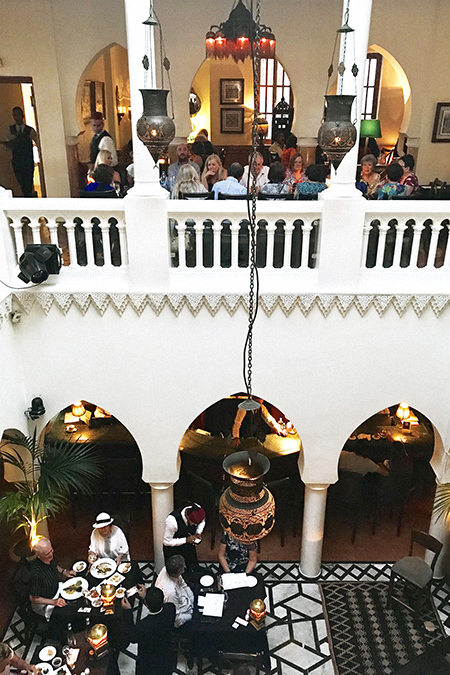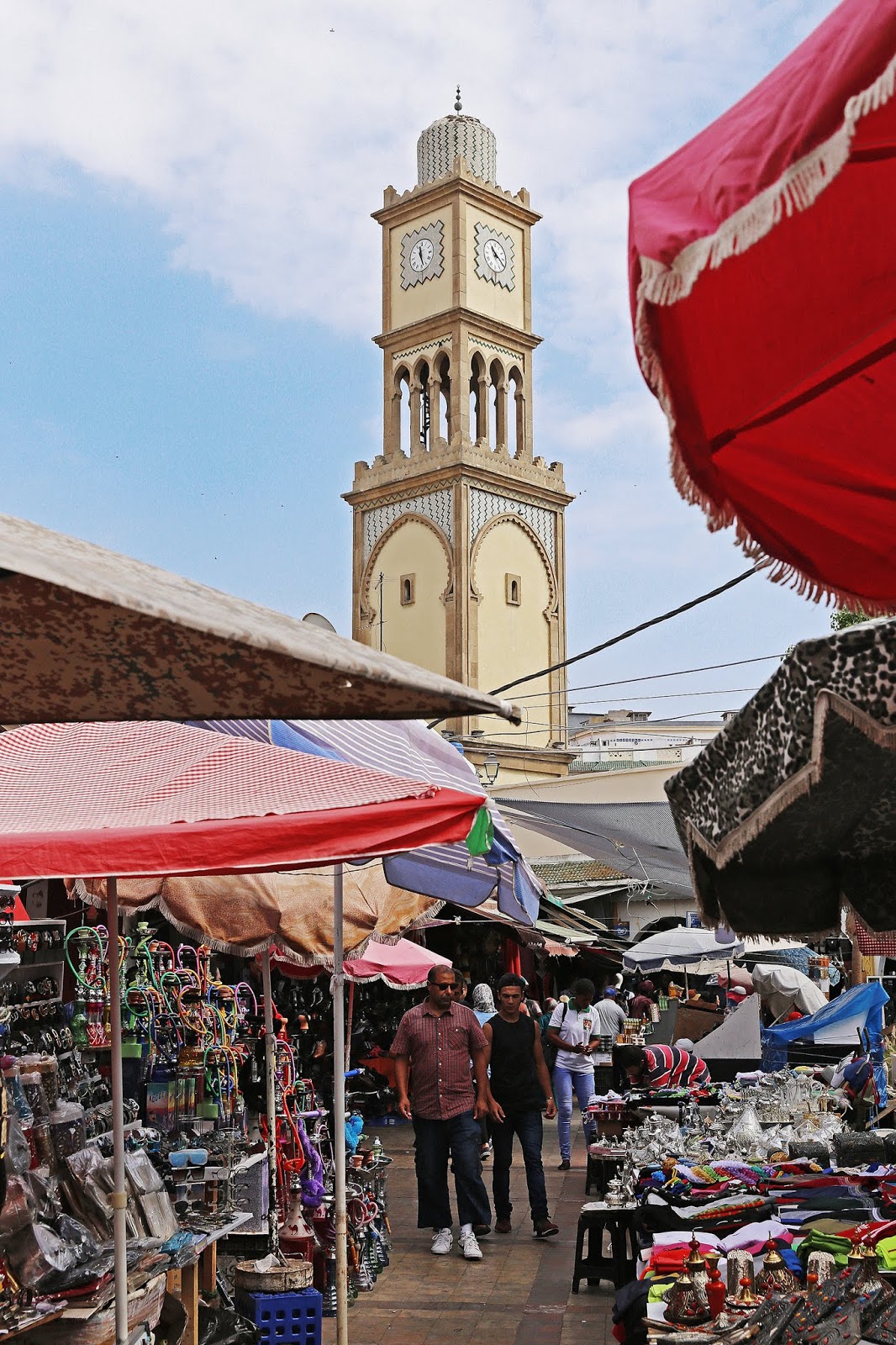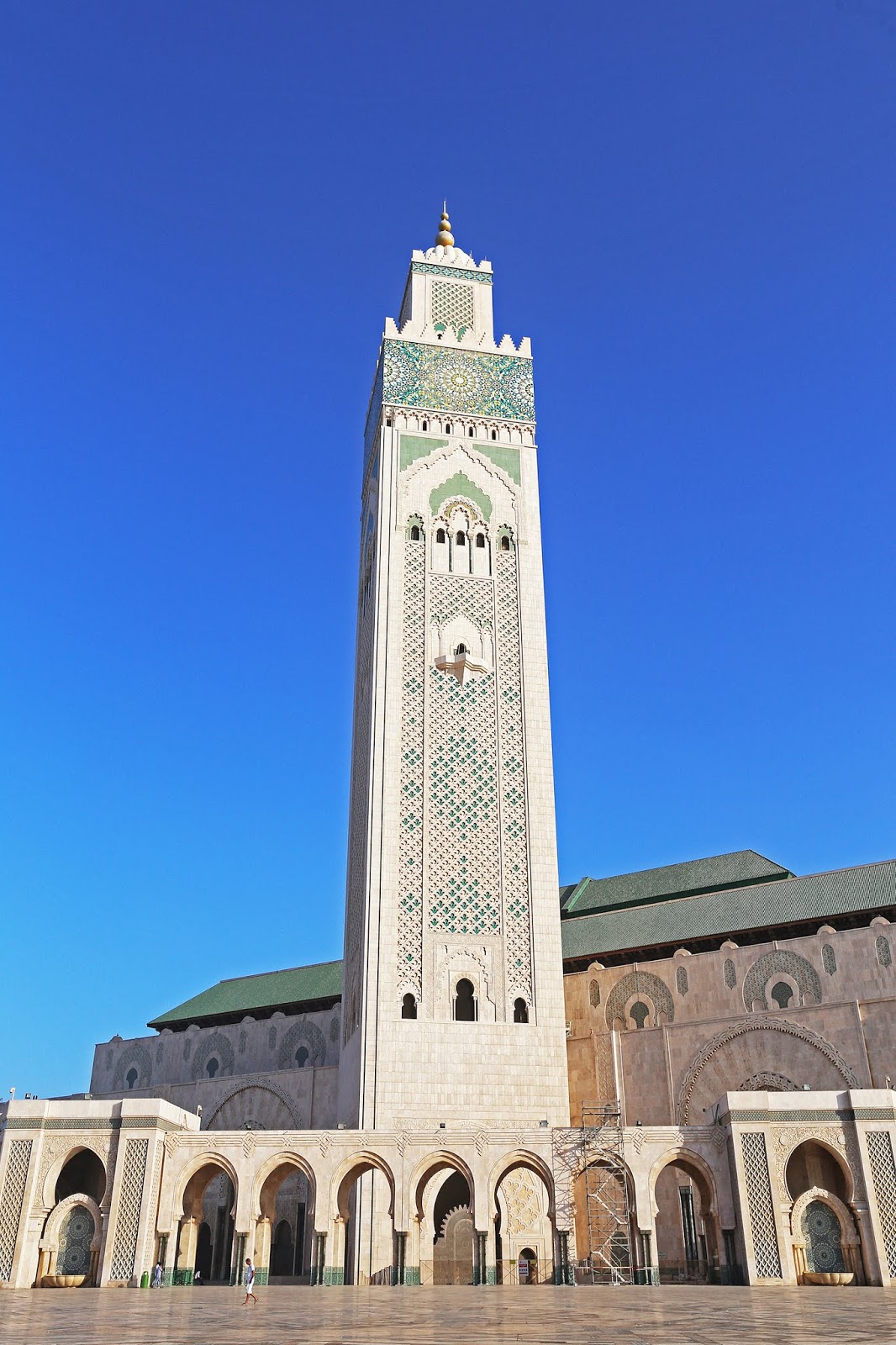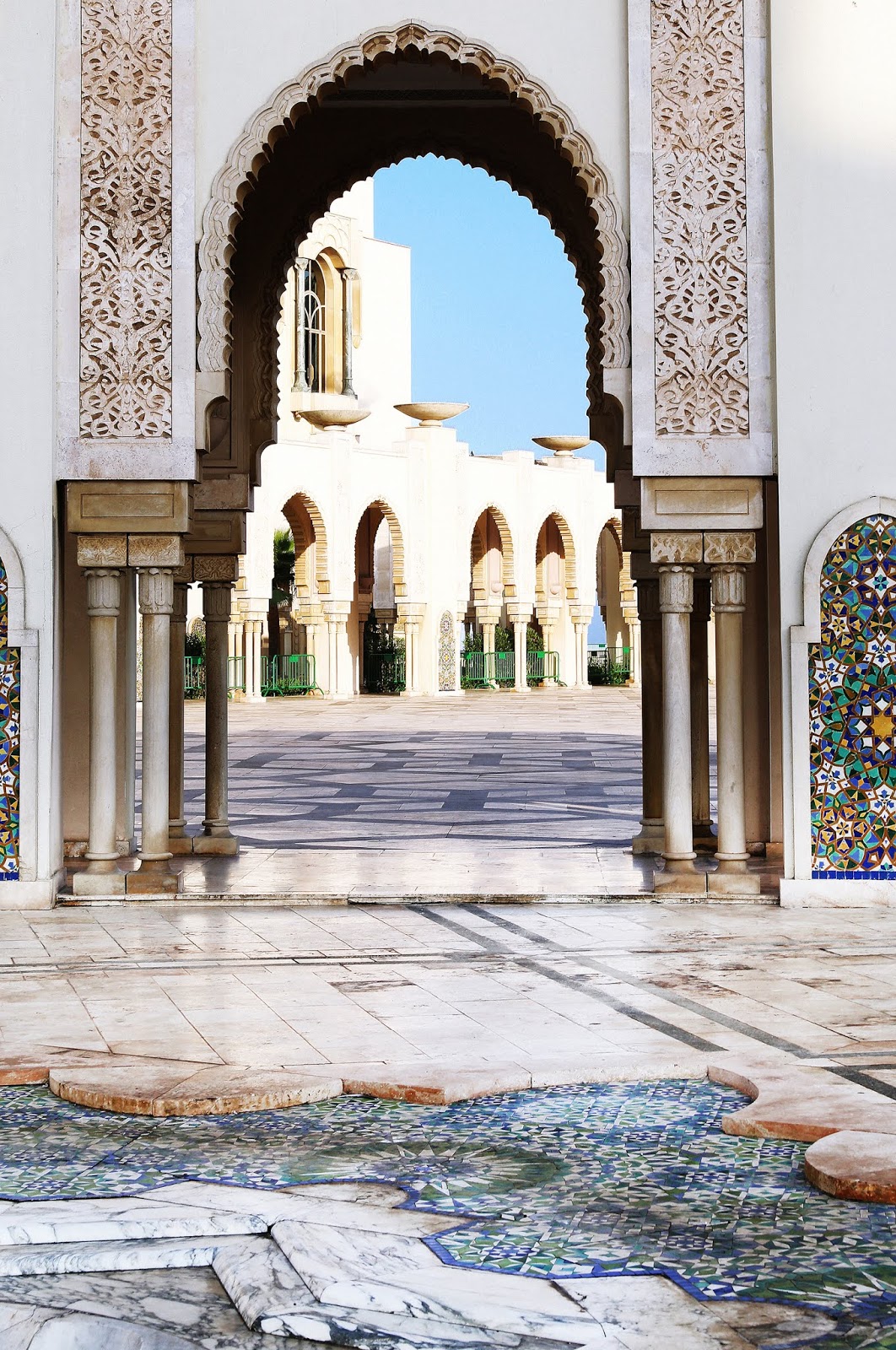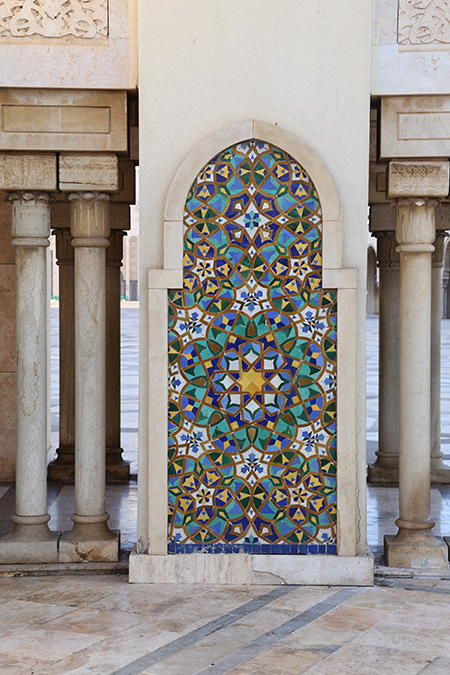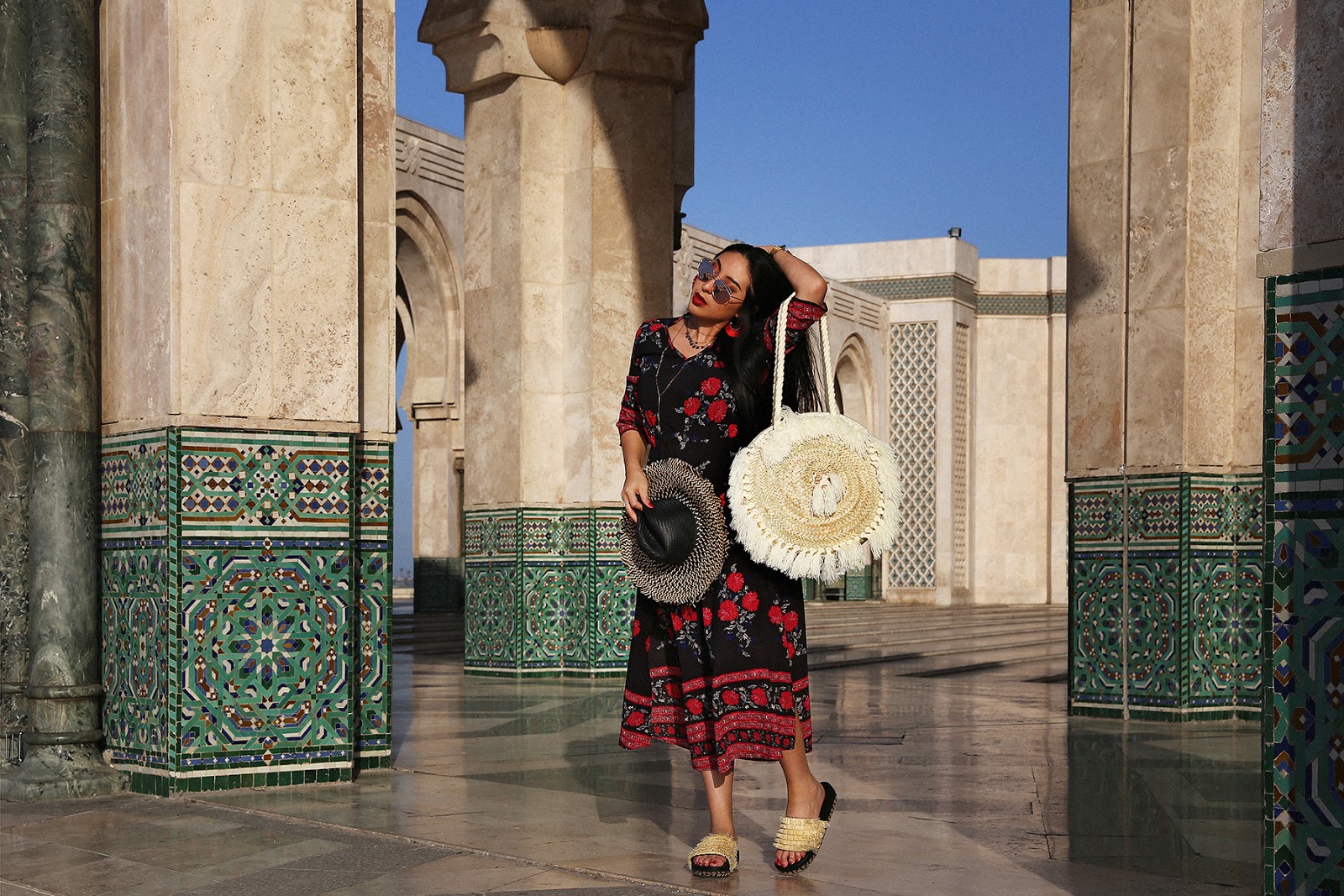We'll always have Casablanca...
THE MOROCCO DIARIES, PART 1 of 10: CASABLANCA
It was an adventure long in the making. I have always dreamt of Africa, but until my recent trip to Morocco I had never stepped foot in any of the continent’s 54 countries. Several years ago, I was taking a summer in the south of Spain with a group of friends. On a whim, the group wanted to go to Morocco that very same day. Our spontaneity was dashed when we realised that I needed to apply for a visa, which would’ve taken weeks. Fast forward to 27 December 2017 and the Kingdom of Morocco agreed that all Malaysians could visit visa-free. I couldn’t have asked for a better Christmas present. So a trip to Morocco was booked for the following September: a tour spanning several towns and cities with sights and experiences so diverse that I felt like I got a decent overview of what this country had to offer. From the tree-climbing goats of Agadir to the urban cacophony of Marrakech, my Moroccan experience was everything I had dreamt of and more.
I’m so very excited to share with you my journey with my Moroccan Diaries, a 10-part series of travel stories spanning 13 cities and towns. The first and the last of the destinations was the port city of Casablanca. Although often overlooked for its more atmospheric (read: Insta-worthy) siblings such as Chefchaouen and Marrakech, Casablanca is the best representation of the modern nation. The former pirate lair-turned economic capital of the country, Casablanca Morocco’s largest city, has its sights set firmly across the Atlantic and onto the future. Here’s looking at you, kid.
RICK’S CAFE
Casablanca endures in the imagination of many - myself included - as the setting for one of the greatest movies of all time. The classic movie Casablanca is still relevant today as a spotlight is constantly cast on the plight of refugees, and will continue to endure for its immortal dialogue including the oft-misquoted “Play it again, Sam.” The movie itself was filmed in a Californian studio, but thanks to the loving efforts of the late former-American diplomat Kathy Kriger, fans of Casablanca can wine and dine at Rick’s Cafe.
And what a recreation it is. The legendary “gin joint” is housed in a traditional Moroccan mansion; complete with riad. Just like the film, Rick’s Cafe is packed with foreigners. Thankfully, the nervous tension of the original film is not present: the atmopshere is nostalgic and thoroughly inviting, with jazz music lulling guests to while away an afternoon over the sumptous surroundings and exquisite dishes. I had goat’s cheese croquettes with honey, lavender, crushed almonds, lamb shank with sesame caramelised prunes and saffron rice, and peach melba. All of it generous and delicious, with attentive and friendly service by Samer - who pointed out the handsome upstairs lounge, decorated in movie paraphanelia where one could watch Casablanca (both the film and the city, the latter from the balcony).
Casablanca endures in the imagination of many - myself included - as the setting for one of the greatest movies of all time. The classic movie Casablanca is still relevant today as a spotlight is constantly cast on the plight of refugees, and will continue to endure for its immortal dialogue including the oft-misquoted “Play it again, Sam.” The movie itself was filmed in a Californian studio, but thanks to the loving efforts of the late former-American diplomat Kathy Kriger, fans of Casablanca can wine and dine at Rick’s Cafe.
And what a recreation it is. The legendary “gin joint” is housed in a traditional Moroccan mansion; complete with riad. Just like the film, Rick’s Cafe is packed with foreigners. Thankfully, the nervous tension of the original film is not present: the atmopshere is nostalgic and thoroughly inviting, with jazz music lulling guests to while away an afternoon over the sumptous surroundings and exquisite dishes. I had goat’s cheese croquettes with honey, lavender, crushed almonds, lamb shank with sesame caramelised prunes and saffron rice, and peach melba. All of it generous and delicious, with attentive and friendly service by Samer - who pointed out the handsome upstairs lounge, decorated in movie paraphanelia where one could watch Casablanca (both the film and the city, the latter from the balcony).
The first and the last meal of my Morocco trip were at Rick’s Cafe. Both of those meals were the best I had in that country. My experiences at Rick’s Cafe were the perfect beginning and ending of a trip I had anticipated for so long, not just for the romantic ambience and the gorgeous food, but also for bringing to life a Hollywood classic that has been one of my favourite movies for as long as I can remember.
Casablanca is often passed over by travellers seeking to visit Morocco, for this modern city’s charms are less obvious. But a closer inspection reveals more, such as this charming restaurant I stumbled upon when I explored a hole in the wall beneath a cannon embedded in a fortress.
THE OLD MEDINA
...likewise, the Old Medina (Old City) of Casablanca lacks the characteristics you’d expect from such a quintessentially Moroccan attraction. Though the lanes are charmingly crooked and the walls lovingly weathered, the Medina feels much newer than its medieval counterparts in other cities. At first glance, the wares for sale seem perfunctory and dare I say, prosaic; but that’s not to say that the Medina doesn’t deserve a closer look. I certainly would not have thought to thoroughly explore, had a friendly local not come up to me and ask where I was from. When I told him “Malaysia”, his face lit up - according to him, Malaysians enjoy a good reputation amongst Moroccans for being compassionate, polite, and not-pushy at Haj, the pilgrimage to the Holy City of Mecca. So it was his absolute pleasure, he insisted, to guide me through the Old Medina Honestly, without his help I would’ve been absolutely lost - the Medina was a maze of 4,000 stalls! I didn’t care much for the designer knockoffs, but the local crafts; oh my! Woven baskets, hand embroidered dresses, bejewelled kaftans! I bought a lovely round basket with rope handles, covered in fluffy tassels for 200 dirham (€18) that I would’ve paid £70 for in a shop in London. I’m certainly glad I gave the Medina a chance. I later learnt that it was a popular route for those walking between downtown Casablanca and Hassan II Mosque. The Old Medina of Casablanca might not be the most scenic in Morocco, but it had its charms, even if it wasn’t the postcard from the past I had hoped it to be.
LA CORNICHE
La Corniche is even less traditional than the Medina. The long stretch of beachside boulevard personifies what makes Casablanca so different from other Moroccan cities. Think Malibu Beach, Moroccan edition: rows of palms fringe the strip, where lanky teenagers repping in Gucci and Supreme hang out by the Golden Arches, nicknamed by the locals as Mohammed-Donald’s. Glamourous women jog along the boulevard in full makeup and jewellery, no doubt from their swanky villa homes in nearby Anfa, the Beverly Hills of Casablanca. The gleaming and upscale hotel, Four Seasons, was occupied by the national football team, who that night would play in Casablanca and score 3-0, so their VIP escort to the airport the next day was well deserved. Then there are posters of King Mohammed VI and his family emblazoned with championed values including tolerance.
As well as being the economic heart of the country, Casablanca is the most liberal and progressive of Morocco's cities. Casa’s cosmopolitan nature is laid bare for all to see on La Corniche, making the kilometres-long walk along the beach one that is not only pleasant but refreshing, in both literal and figurative sense.
HASSAN II MOSQUEThe star of Casablanca would be Hassan II Mosque. Its 210-metre tall minaret dominates the skyline and is the city’s major landmark. The showstopping monument, built on an outcrop over the ocean, seems to float on the Atlantic, echoing a verse from the Quran which states that God’s throne was built upon the water. Hassan II Mosque was built to commemorate the former king's 60th birthday. No expense was spared - Hassan II Mosque is a showcase of the very best Moroccan artisanship and materials; including cedar from the Middle Atlas and pink granite from Agadir, all of it intricately hand-carved by a team of over 6,000 master craftspeople. Worshippers pray on a centrally heated floor, and can see the Atlantic breaking over the rocks underneath the glass floor in the basement and feel the sunlight through the retractable roof. The mosque was built to impress; and it certainly does: from its marble-inlayed courtyard floors to its dramatic position on the Atlantic and most of all, its sheer size. Hassan II Mosque is commonly thought to be the world's third-largest mosque after those in Mecca and Medina, and can accommodate 25,000 worshippers.
Mosques in Morocco are closed to non-worshippers so as not to disrupt and distract those who come to have their conversations with God. The exception is Hassan II Mosque, where people of any creed and faith can visit even the interiors, as long as they come outside prayer times and are ‘decently and respectfully dressed’ ie. knees and upper arms need to be covered. Women are not required to wear head coverings.
I popped in for a quick look on a Sunday morning, knowing that Hassan II Mosque would be mostly empty at that time. The saying in multi-fatih Morocco goes; Friday is for Muslims (mosques), Saturday is for Jews (synagogues), and Sunday is for Christians (churches). I’m told that there has never been conflict between the 3 groups in the history of Morocco. This reiterates’s the country’s current reigning monarch’s ideals of coexistence and fraternity, a quality His Majesty inherited from his grandfather Sultan Mohammed V who protected his Jewish subjects and answered the Nazis’ Jewish question with: “There are no Jewish citizens, there are no Muslims citizens, they are all Moroccans.”
I popped in for a quick look on a Sunday morning, knowing that Hassan II Mosque would be mostly empty at that time. The saying in multi-fatih Morocco goes; Friday is for Muslims (mosques), Saturday is for Jews (synagogues), and Sunday is for Christians (churches). I’m told that there has never been conflict between the 3 groups in the history of Morocco. This reiterates’s the country’s current reigning monarch’s ideals of coexistence and fraternity, a quality His Majesty inherited from his grandfather Sultan Mohammed V who protected his Jewish subjects and answered the Nazis’ Jewish question with: “There are no Jewish citizens, there are no Muslims citizens, they are all Moroccans.”
With its uniquely relaxed attitude toward receiving non-worshipping visitors, Hassan II Mosque was an appropriate landmark to close my introduction to cosmopolitan Casablanca. Casablanca’s modernity would prove to be the perfect foil to the rugged charms of the rest of Morocco. Casablanca’s liberal and progressive attitude certainly made me feel welcome in a country I have waited so long to visit.
Next stop: the Imperial cities of Meknes and the capital, Rabat.



